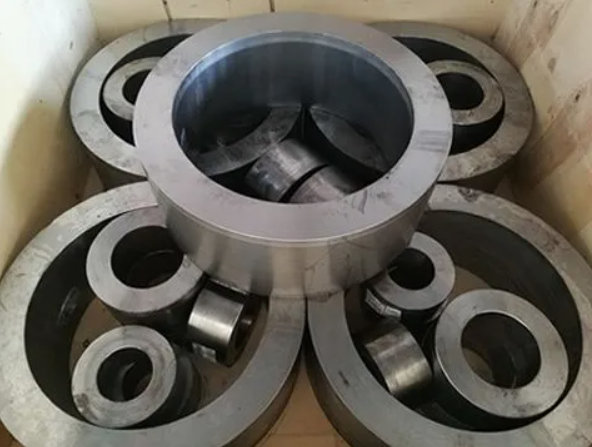Open die forging is a versatile metalworking process known for its ability to shape metal into various forms. But can it be effectively used for both small and large parts? In this article, we’ll explore the versatility of open die forging and how it caters to the production needs of both small and large components.
Versatility in Size Range: One of the key advantages of open die forging is its versatility in handling a wide range of part sizes. While the process is commonly associated with large and heavy-duty components such as shafts, gears, and flanges, it can also be adapted for smaller parts. The flexibility of open die forging allows manufacturers to produce components ranging from a few pounds to several tons in weight. This versatility makes it suitable for various industries, including aerospace, automotive, oil and gas, and construction.
Adaptability in Production Techniques: Open die forging employs a straightforward yet highly adaptable production technique. Unlike closed die forging, which requires custom tooling for each specific part, open die forging relies on skilled craftsmen and basic tooling, such as hammers and anvils, to shape the metal. This simplicity and flexibility in tooling make open die forging well-suited for both small and large parts. Additionally, the manual nature of the process allows for quick adjustments and modifications to accommodate different part sizes and geometries.
Considerations for Size-Specific Challenges:While open die forging can handle a wide range of part sizes, there are certain considerations and challenges associated with forging small and large components. For small parts, maintaining dimensional accuracy and meeting tight tolerances can be more challenging due to the inherent variability in manual forging processes. Conversely, forging large parts requires specialized equipment and facilities capable of handling heavy-duty materials and accommodating oversized workpieces. Manufacturers must carefully consider these size-specific challenges and implement appropriate process controls and quality assurance measures to ensure the production of high-quality components.
In conclusion, open die forging is indeed a versatile process that can be effectively utilized for both small and large parts. Its adaptability, flexibility, and ability to cater to a wide range of part sizes make it a preferred choice for many industries. By understanding the unique requirements and challenges associated with different part sizes, manufacturers can optimize the open die forging process to produce components that meet the highest standards of quality and performance.
Post time: Apr-28-2024





